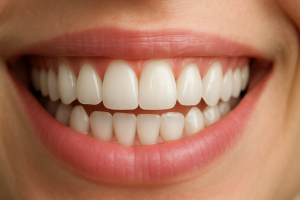Dental care is an important part of general health and well-being, but many Ontarians still have trouble finding affordable dental care. Treatments for tooth problems are very expensive; as a result, many people have trouble getting the care they need. The good news is that Ontario has many options for everyone to get free or affordable dental care, regardless of their financial situation. At our dental office in Oakville, our experienced dentist provides exceptional care to ensure every patient achieves a healthy, beautiful smile.
Which Dental Services Are Provided by Free Dental Care Centers?
Centers offering free dental services often offer essential dental procedures that are most needed by people experiencing oral issues. Services such as:
- Oral examinations
- Cleanings
- Fillings
- Tooth Extractions
- X-rays
- Emergency Dental Care
In this article, we will take a look at a number of choices and resources that Ontarians can use to get free dental care. Through these programs, you can make sure that you and your family stay healthy and smile beautifully without being worried about the expenses.
Read More: Specialized Dental Services for Seniors in Oakville
1. Ontario Public Health Units: Dental Care for All Ages
Public health units are very important for improving the health of the Ontario community. Many public health units provide dental care for children, seniors, and those facing financial hardship. Preventive dental services such as cleanings, fluoride treatments, and dental screenings are usually provided by these units. You can find out about eligibility requirements and dental services in your area by calling your local public health office.

2. Ontario Works (OW) and the Ontario Disability Support Program (ODSP): Dental Coverage in Ontario
If you receive assistance from OW or ODSP, you may be able to get free dental care as part of your support programs. They will cover dental services like exams, cleanings, dental fillings, tooth extractions, and dental implants.
To decide whether you’re eligible for this type of dental care or not, your income, family size, and disability status will be considered. If you want to acquire more information on how to get dental care through OW and ODSP, you should talk to your manager or visit the Ontario government’s website.
3. Healthy Smiles, Ontario: Little Smiles Matter
This government-funded program helps kids and teens under 18 get free dental care. The goal of the program is to make sure that all kids, regardless of their family’s financial situation, can get the dental care they need. Services like regular check-ups, cleanings, fillings, X-rays, and emergency dental care are all covered. You can apply for Healthy Smiles Ontario at their local public health office or online.
Read More: Emergency dentist in Oakville
4. Ontario Seniors Dental Care Program: Free Dental Care for Seniors
Low-income seniors aged 65 and older can benefit from this program and receive free dental care in Ontario. This program covers basic dental procedures that are necessary for keeping teeth healthy. These procedures include oral examinations, dental cleanings, X-rays, fillings, and tooth extractions.
If you think you’re qualified to receive dental care through this program, you can apply for it online or at community health centers that are part of it. The requirements to be eligible may vary, but factors such as your income and where you live are among the things that will be assessed.
Read More: The Best Side to Sleep with a Toothache

5. Canadian Dental Care Plan (CDCP)
The Canadian Dental Care Plan (CDCP) is a new federal program designed to help Canadians without private dental insurance access affordable oral health services. If your household income is under $90,000 and you don’t have coverage through work or another plan, you may qualify. Depending on your income level, the CDCP can cover 40% to 100% of eligible dental treatments such as exams, cleanings, fillings, extractions, dentures, and more. The program is rolling out in phases, starting with seniors, children, and people with disabilities, and will be fully available to all eligible Canadians by 2025. This initiative is an important step toward making dental care more accessible and reducing financial barriers for families across Ontario.
Read More: Best Oakville Cosmetic Dentist
Get Affordable Dental Care in Ontario
At Smile Point Dental Clinic, we understand the important role that oral health plays in the general well-being of our community. We believe that everybody should have access to dental care when they need it. That’s why we offer a wide range of dental procedures that are affordable for residents of Ontario. Contact us to find out more about these dental procedures and receive a detailed consultation.
Final Words
Free or low-cost dental care is available in Ontario through public health units, government aid programs, community health centers, dental schools, and charitable organizations, among other places.
You can take care of your oral health without having to worry about money if you explore these choices and understand the requirements for eligibility. Staying informed about the services and programs available in Ontario will help you maintain your oral health without experiencing financial stress. Book a free consultation with the best dentist in Oakville at Smile Point Dentistry today!
FAQ
How to get teeth removed for free?
Under the CDCP, eligible Canadians can have tooth extractions covered. If your family income is below $70,000 and you qualify, extractions are fully covered at the program’s set fee rates. For higher income brackets (up to $89,999), partial coverage applies, and you may need to pay a co-payment.
Does Ontario Works cover wisdom teeth removal?
With the CDCP, tooth extractions, including wisdom teeth, can be covered if they are deemed medically necessary by your dental provider. Coverage level depends on your income bracket under the CDCP.
Does Ontario Works cover dental fillings?
Through the CDCP, basic restorative services like dental fillings are included. Eligible patients can receive full or partial coverage based on their adjusted family net income.





